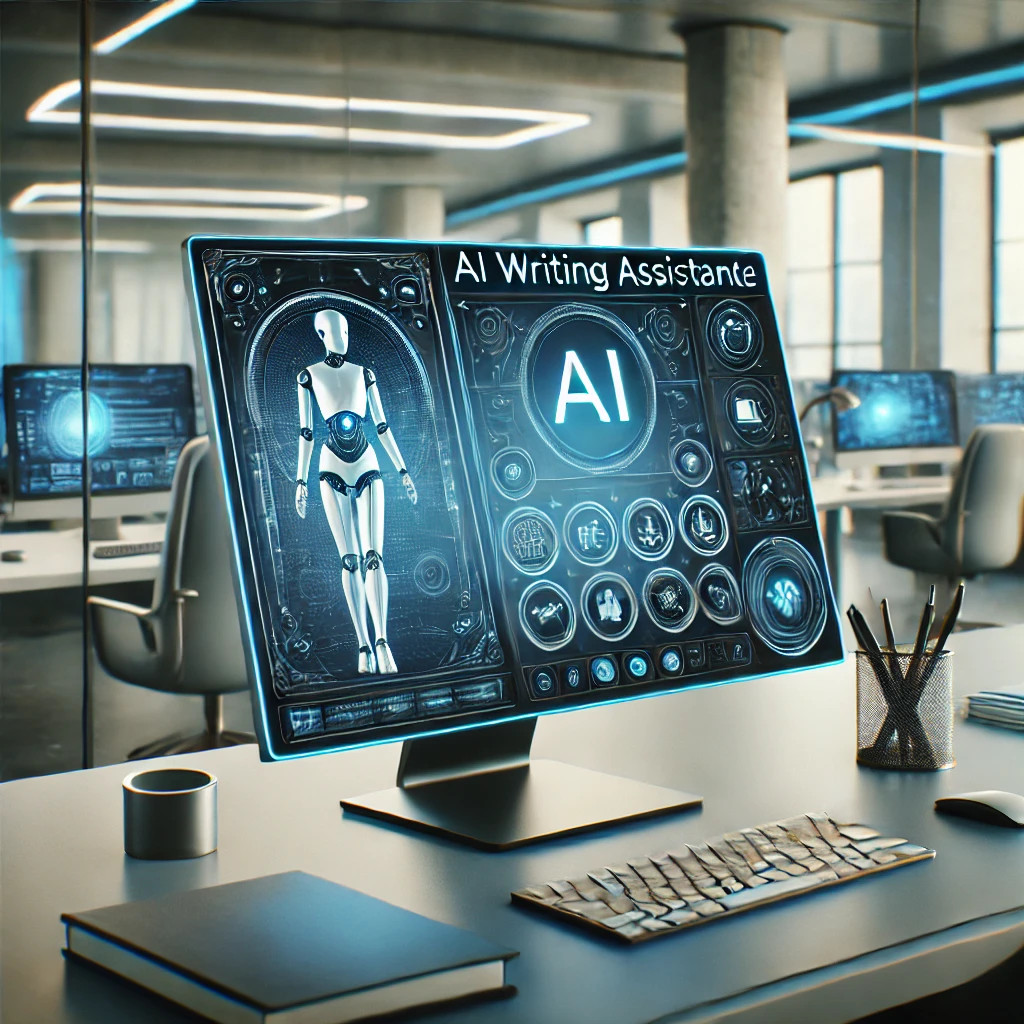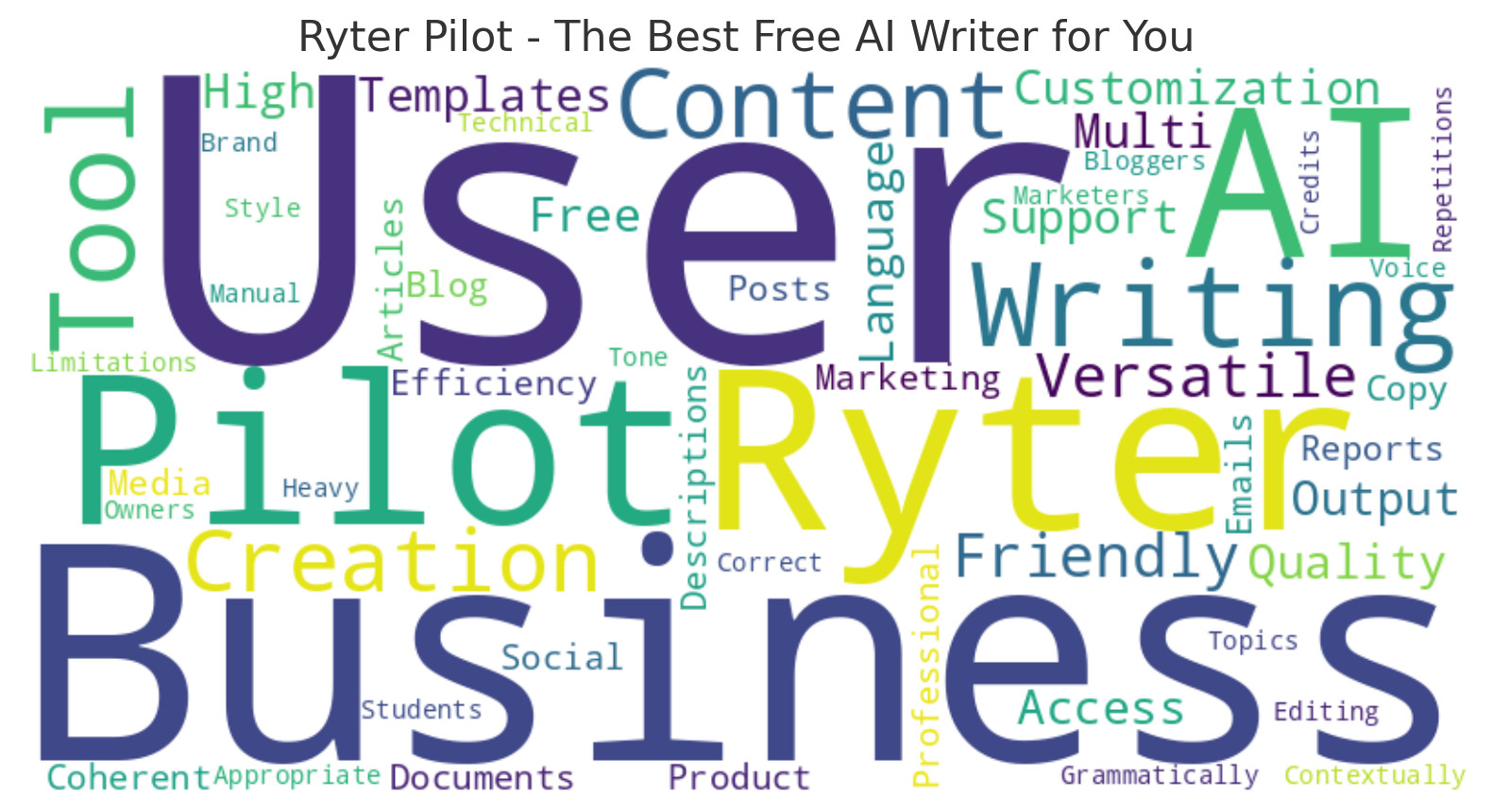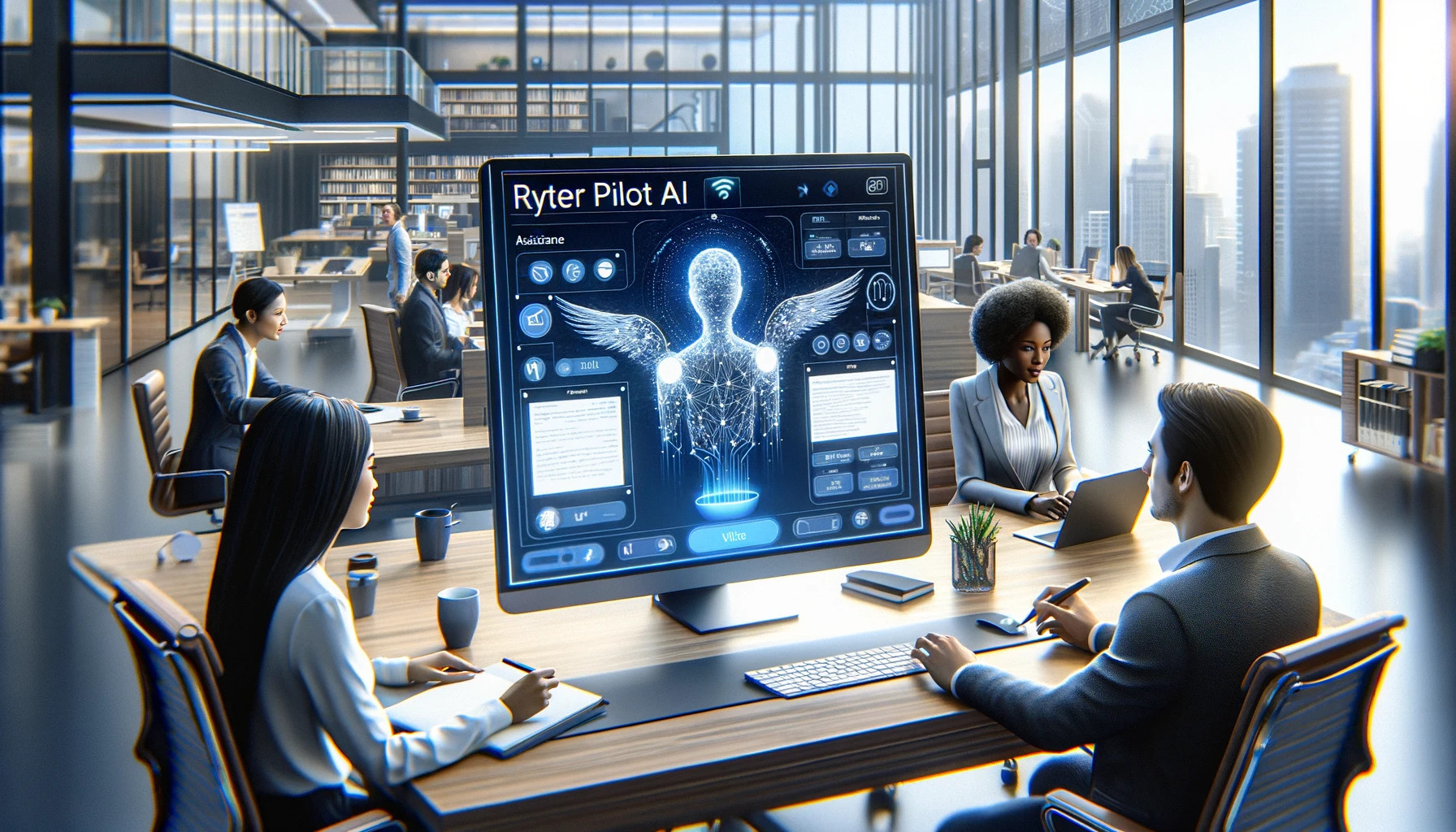 Loading Please Wait...
Loading Please Wait... Loading Please Wait...
Loading Please Wait...
 Corrine Satterfield
Corrine Satterfield
In today's rapidly evolving digital landscape, artificial intelligence (AI) is revolutionizing the way content is created. Businesses and content creators are increasingly turning to AI to generate articles, blogs, and other types of content, driven by AI's ability to produce material quickly and at scale. However, while AI can draft content How To Edit AI Content to Rank on Google, it often lacks the nuance and depth that search engines like Google require to rank content highly. This article explores the critical steps needed to edit AI-generated content to enhance its search engine optimization (SEO) and ensure it meets Google's quality standards.

AI-generated content typically needs substantial tweaking and editing to align with SEO best practices. This process ensures that the content not only appeals to Google's algorithms but also provides real value to readers. Editing AI content involves more than just proofreading; it requires a strategic integration of SEO elements such as keywords, meta tags, and structured data How To Edit AI Content to Rank on Google, which are crucial for ranking well in search results.
As we delve deeper into the nuances of AI content modification, we will cover the essential aspects of SEO, explore the characteristics of effective AI-generated content, and provide a detailed guide on how to edit this content to maximize its SEO potential. By the end of this article, you'll have a comprehensive understanding of how to transform generic AI output into engaging, authoritative, and highly ranked content on Google.
SEO is the backbone of digital content strategy How To Edit AI Content to Rank on Google, encompassing various elements that influence a website's visibility and ranking on search engines. At its core, SEO is about optimizing content to be easily discoverable, readable, and valuable to users, which, in turn, is measured favorably by search engines. Understanding keywords, backlinks, and user engagement metrics is essential for anyone looking to enhance their content's search engine performance.
Keywords are one of the most fundamental aspects of SEO. They are the terms and phrases that users enter into search engines and should be naturally integrated throughout your content. Effective keyword usage allows Google to understand the relevance of your content to specific search queries, which can significantly affect its visibility. However, keyword stuffing, or overusing keywords, can lead to penalties from Google, making it crucial to balance keyword density and placement expertly.
Backlinks, another critical component of SEO, are links from other websites that point to your content. Google views backlinks as a sign of the credibility and authority of your content. The more high-quality sites that link to your content, the more trustworthy it appears to search engines, which can improve your site’s ranking. However, acquiring quality backlinks requires producing content that is not only informative but also engaging and worthy of being cited by reputable sources.
AI-generated content has the potential to be a powerful tool for content creators, providing a foundation that can be built upon to produce engaging and informative pieces. However, to be effective, AI content must first adhere to the principles of high-quality writing. It should be clear, concise, and free of errors, which are the basic requirements for any piece of written content. Additionally, the content should be relevant to the audience's interests and needs, offering real value rather than just filling space on a page.
One of the major pitfalls of AI-generated content is its tendency towards generating generic or repetitive information, which can lead to issues with duplicate content. Duplicate content can significantly harm SEO as it confuses search engines, making them less likely to rank multiple pages with the same content. To combat this, editors need to revise AI content to ensure it is unique and offers a new perspective or information not available elsewhere.

Lastly, the structure of AI-generated content is often lacking. While AI can string together sentences and paragraphs, creating a cohesive narrative that flows naturally from introduction to conclusion requires human touch. Effective AI content should be well-organized, with logical progression and clear headings that guide the reader through the article. This structure not only improves readability but also enhances the content's SEO by making it easier for search engines to understand and index the information.
Editing AI-generated content starts with a thorough initial review. This first step involves reading through the AI output to understand the overall message and identify any glaring issues such as grammatical errors, awkward phrasing, or factual inaccuracies. It's crucial to approach this content with a critical eye, as AI can often miss the subtleties of language and context that human readers appreciate. The goal of this initial review is to make sure that the content not only makes sense but also aligns with your audience's expectations and needs.
The next phase focuses on enhancing readability. This involves adjusting the tone, style, and flow of the content to make it more engaging and easier to read. AI-generated text can be rigid and monotonous, lacking the natural variability in sentence structure and vocabulary that human writers offer. By varying sentence length, using active voice, and incorporating transitional phrases, editors can greatly improve the readability of AI content. Furthermore, it's important to ensure that the content speaks to the intended audience's level of expertise and interest, using appropriate language and technical terms.
Keyword optimization is another critical step in editing AI-generated content. While AI tools can integrate keywords, they often do so without regard to context or frequency, leading to over-optimized content that can penalize SEO. Editors must ensure that keywords are distributed naturally throughout the content, including in strategic locations such as headings, the first paragraph, and near the conclusion. Additionally, synonyms and related phrases should be used to enhance topical relevance without repetitive keyword stuffing, thereby aligning the content more closely with Google’s search algorithms.
To further enhance the SEO of AI-generated content, employing advanced SEO techniques is essential How To Edit AI Content to Rank on Google. One such technique is the effective use of meta tags and descriptions. These elements are crucial as they provide search engines with concise summaries of the web page's content. Properly optimized meta descriptions and title tags can improve click-through rates from search engine results pages (SERPs), as they give potential readers a clear idea of what to expect from the content, making it more likely that they will click on it.
Link building within AI content is another advanced technique that can significantly impact SEO. Including internal links to other relevant articles on your site helps keep users engaged and on your site longer, decreasing bounce rates and increasing page views. External links to reputable sources can also enhance the credibility of your content, which search engines regard favorably. However, it's important to ensure that all links are relevant and add value to the reader's experience, as irrelevant or excessive linking can lead to a poor user experience and potentially harm your site's ranking.
Optimizing for voice search and new SEO trends is also crucial, especially as the use of voice assistants continues to grow. Voice search queries tend to be longer and more conversational than traditional text searches, so your content should include these natural language phrases to improve its visibility in voice search results. Staying current with SEO trends, such as the increasing importance of mobile optimization and page loading speed, is also vital. Ensuring that AI-generated content is adaptable to these trends will help maintain its effectiveness over time.
A variety of tools and resources are available to help edit and optimize AI-generated content. Keyword research tools like Google Keyword Planner, Ahrefs, or SEMrush can provide insights into the keywords that are most relevant to your content's topic and audience. These tools help identify not just high-traffic keywords but also long-tail phrases that can attract more targeted traffic. Utilizing these tools ensures that the content is optimized for the keywords most likely to drive relevant traffic to your site.

Plagiarism checkers such as Copyscape or Grammarly’s plagiarism tool are essential for ensuring that AI-generated content is unique. AI programs can inadvertently replicate content that exists elsewhere on the web, which can lead to SEO penalties for duplicate content. By running AI content through these plagiarism checkers, editors can be sure that the material is original and safe to publish.
SEO analysis tools like Yoast SEO or Moz can provide real-time feedback on how well your content is optimized for search engines. These tools assess aspects of SEO such as keyword density, readability, and meta tag usage, offering actionable insights and suggestions for improvement. By leveraging these tools during the editing process, you can enhance the effectiveness of AI-generated content and improve its potential to rank well in search engine results.
The use of AI in content creation presents unique challenges and ethical considerations. One major concern is the potential for AI to generate misleading or factually incorrect information. AI models, depending on their training data and design, may not always have the most current or accurate information. Editors must diligently fact-check and verify all AI-generated content against reliable sources to ensure its accuracy and trustworthiness. This is crucial not only for maintaining the credibility of the content but also for upholding the reputation of the publishing platform.
Another ethical concern is the transparency regarding the use of AI in content creation How To Edit AI Content to Rank on Google. As AI becomes more integrated into various aspects of digital content production, the line between human-generated and machine-generated content can blur. It is essential for content creators to disclose the use of AI in their creation process when appropriate. This transparency builds trust with the audience, aligns with ethical standards in journalism and content creation, and can even enhance the audience's interest in the technological aspects of content production.
Additionally, AI can replicate or exacerbate existing biases found in its training data How To Edit AI Content to Rank on Google. This can lead to biased content that may alienate parts of the audience or perpetuate stereotypes How To Edit AI Content to Rank on Google. Editors need to be aware of these potential biases and work actively to counteract them by adjusting the AI’s output or supplementing it with more balanced viewpoints. Ensuring content fairness and inclusivity not only aligns with ethical standards but also broadens the audience reach and engagement.
Real-world examples of AI content editing can provide valuable insights into best practices and strategies. For instance, a marketing firm might use an AI to draft blog posts, which are then edited by human editors to align with the firm’s brand voice and SEO strategy. These edited posts often perform better in terms of user engagement and SEO rankings compared to their unedited versions. Analyzing these case studies reveals common patterns, such as the importance of enhancing the unique voice and the strategic placement of keywords for SEO.
Another example involves a news outlet that uses AI to generate initial reports on financial data or sports results. These reports are subsequently reviewed and enriched with insights, analyses, and comments by human journalists. This hybrid approach ensures that the content is not only quick and efficient but also insightful and deeply engaging. Such case studies illustrate how combining AI efficiency with human expertise can lead to high-quality content that is both informative and compelling.
Lastly, consider a travel website that uses AI to create initial drafts of destination guides. These guides are then enhanced by travel writers who add personal experiences, recommendations, and tips. The writers also ensure that the content includes region-specific keywords and complies with SEO best practices. This process results in rich, engaging content that ranks well on search engines and appeals strongly to readers planning their travels. These examples underscore the effectiveness of a collaborative approach between AI-generated content and human editing.
The future of AI in content creation looks promising, with continual advancements in technology enhancing AI’s capabilities. As AI tools become more sophisticated, they are expected to handle more complex writing tasks with greater nuance and accuracy. However, the role of human editors will remain indispensable. Editors not only refine the content but also infuse it with a level of empathy and understanding that AI currently cannot replicate. This human touch is critical for creating content that resonates deeply with readers.

Moreover, as AI technologies evolve, there will be a greater need for professionals who can bridge the gap between technical AI capabilities and creative content generation. These professionals will need to be skilled not only in SEO and content marketing but also in AI management and ethics. By staying ahead of technological trends and maintaining a clear ethical framework, content creators can ensure that their use of AI supports both business goals and broader societal values.
Finally, the integration of AI with other emerging technologies such as natural language processing, machine learning, and data analytics will further transform content creation. These technologies will allow for more personalized and dynamically optimized content, potentially changing how audiences interact with digital media. By embracing these advancements, content creators can enhance their offerings, meet the evolving expectations of their audience, and maintain a competitive edge in a digital landscape that is constantly changing How To Edit AI Content to Rank on Google.
Editing AI-generated content to rank well on Google requires a nuanced understanding of SEO How To Edit AI Content to Rank on Google, a critical approach to content quality, and an appreciation for the ethical dimensions of using AI in content creation. Through careful editing, strategic keyword integration, and adherence to SEO best practices How To Edit AI Content to Rank on Google, AI-generated content can be transformed into engaging, authoritative, and rank-worthy articles. However, the role of the human editor remains pivotal. Human intervention ensures that the content is not only optimized for search engines but also resonates with real human emotions and experiences, providing genuine value to readers.
As we look to the future, the intersection of AI and content creation holds exciting possibilities. The technology will continue to evolve, becoming more sophisticated and integrated into all aspects of content production. How To Edit AI Content to Rank on Google, the challenges of maintaining quality, ensuring accuracy, and managing ethical considerations will also grow. Content creators and editors must stay informed about these developments and adapt their strategies to continue producing content that is both impactful and responsible.
In sum, the key to successful AI content lies in the collaboration between machine efficiency and human insight. This hybrid approach leverages the strengths of both entities How To Edit AI Content to Rank on Google, ensuring that the content is not only SEO-friendly but also thorough, accurate, and engaging. As AI continues to shape the content creation landscape, embracing these practices will be essential for anyone looking to excel in the competitive world of online content.
Please login to post a comment.
No comments available.




